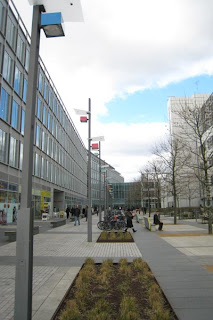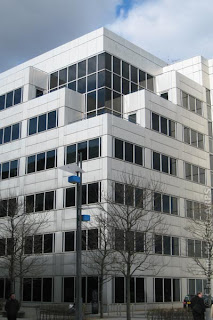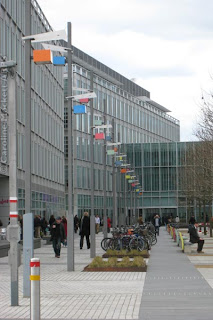You might have heard some lenses described as "wide angle" or "telephoto". This article should help you get to grips with different types of lenses and what they do.
Theory
With a 35mm film camera, a 50mm lens is called a "standard" lens because it shows the same angle of view and perspective as the human eye. It's focal length is said to be 50mm. Using one of these lenses, you will see objects in the correct size and relationship to each other. Other lens types are:
- Wide angle - below 50mm, eg 24mm
Shows a greater angle of view in the viewfinder than 50mm, but things "seem" to be further away. - Telephoto - lenses above 50mm, eg 300mm
Shows a smaller fraction of the scene than 50mm, so things "seem" to be nearer.
- Wide angle zoom - eg. 18-55mm lens often comes as part of a "kit" with a camera
- Telephoto zoom - eg. 70-210mm is a zoom which might be included for taking larger images at a distance.
So far, we have been talking about lenses in relation to film cameras (35mm). With many digital SLRs, the CCD sensor it smaller in area than a 35mm negative, and this means there is a conversion factor which needs to be considered - this gives us the 35mm equivalent focal length for the lens.
For my Canon EOS 300D, the conversion factor is x1.6. Here are some common lenses that I use with it, and their 35mm equivalent focal lengths:
- 17-85mm EF-S wide zoom -> 27-136mm equivalent with 35mm
- 70-300mm EF telephoto zoom -> 112-480mm equivalent with 35mm
- 50mm EF standard lens -> 80mm equivalent with 35mm
- 100-400mm EF telephoto zoom -> 160-640mm equivalent with 35mm
Examples
What effect does the focal length of the lens have on the pictures, and what are the advantages and disadvantages of using them?
Wide Angle
- Good for use in confined spaces - where you can't "stand back" as far as you might like
- Perspective is widened - allows you to "get more in" the picture
- Things in the background will seem a lot further away than they do to the naked eye
- Size of objects in the foreground are exaggerated
- Often leads to distortion of verticals - they become curved instead of straight, and/or appear to converge
 [Wide angle - 29mm equivalent focal length - taken right next to the building. It appears to lean backwards, and the verticals are converging in a triangular formation]
[Wide angle - 29mm equivalent focal length - taken right next to the building. It appears to lean backwards, and the verticals are converging in a triangular formation] [29mm equivalent shows things in thebackground to be very small, and foreground is larger. The post on the left is also showing a curved distortion]
[29mm equivalent shows things in thebackground to be very small, and foreground is larger. The post on the left is also showing a curved distortion]Telephoto
- Good for magnifying the view - where you can't get as close as you might like
- Perspective is compressed - things will seem to be squashed together with not as much separation
- Things in the background will seem a lot closer than they do to the naked eye
 [58mm equivalent - the building looks much more natural and there is much less distortion of vertical lines]
[58mm equivalent - the building looks much more natural and there is much less distortion of vertical lines] [Telephoto - 109mm equivalent, compresses perspective so the lamps apear closer together. Distant objects appear nearer than they are.]
[Telephoto - 109mm equivalent, compresses perspective so the lamps apear closer together. Distant objects appear nearer than they are.]You have probably already used the different zoom lengths on offer from your camera and lenses. But why not try taking the same subject from close to, using a wide angle, and then move further away and use the telephoto setting. This should give you some different views of the same subject to compare.


No comments:
Post a Comment